The Huawei MateBook 16 Review, Powered by AMD Ryzen 7 5800H: Ecosystem Plus
by Dr. Ian Cutress on October 20, 2021 8:00 AM EST- Posted in
- Laptops
- AMD
- Huawei
- Matebook
- Ryzen
- Zen 3
- MateBook 16
- Huawei Share
- Ryzen 7 5800H
Display, Battery Life, and Charging
The Monitor
The high-level specifications of the monitor make for very interesting reading. A 16-inch IPS display with a 2520x1680 resolution, making it a 3:2 ratio (which is becoming more and more common on laptops of all sizes). The IPS panel means that the viewing angles are wide, and Huawei rates the screen for 300 nits brightness maximum as well as a 1500:1 contrast ratio. That brightness maximum isn’t anything to write home about – in fact it’s a bit low for any external daytime use – but the contrast ratio is better than the MateBook X Pro we last reviewed because of the lower blacks. On colors, Huawei pre-calibrates the display to a dE below 1, qualifying the display for 100% of the sRGB gamut with 8-bit + FRC support.
That gives a lot to play with, so here are our results:
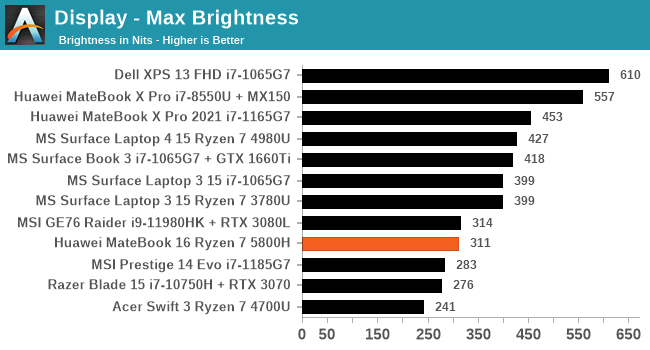
The specification sheet said 300 nits, and we scored 311. Our 200 nits regular battery testing was at a brightness setting of 65, with a very linear profile sweep.
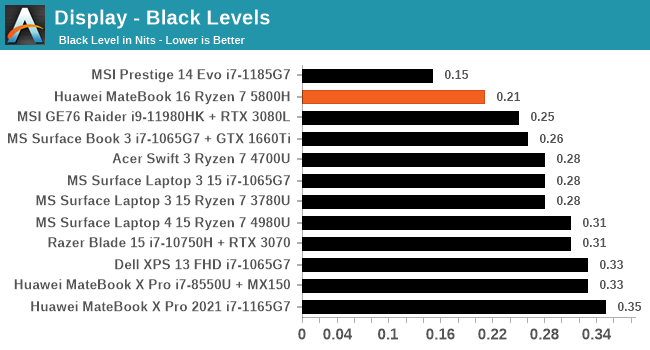

The display has some of the better black levels at maximum brightness that we’ve tested, giving a 1488:1 contrast ratio, which is almost identical to the rating.
The odd resolution of 2520x1680 is a little left-field: Huawei calls it a 2.5K+ display. But what it really comes down to is the 3:2 version of 2560x1600, which is a 16:10 ratio. The only thing really missing from the display is the lack of a touchscreen. For certain office workloads, having a touchscreen is quite handy, although it does tend to add a little weight.
For those looking for color accuracy, unfortunately I do not have the same equipment Brett does for this, however my colorimeter provides the following at 200 nits:
This shows that the red tracking is almost perfect, with the greens and the blues being biased away from that proportional line.
Battery Life
Due to the short time we had, I was only able to run one battery life test, and chose our Web Playback test that uses MS Edge to cycle through a number of remote server-driven but fixed webpage workloads. The screen brightness is set to 200 nits. Power numbers are reverse calculated mWh reported by Windows.
After the initial caching of the webpages, the system settled down into a 6-8 for most of the test. At around 550 minutes, we see a decrease in the system activity, which we’re attributing to the system entering the low power plan at 20% total battery, which surprisingly picks up again after an hour around 15% battery. The total battery life in this case, from 100% charge to shutdown (which this laptop was set at 2%, but Windows cuts at 2.5%) is 697 minutes.
Charging
So here’s where it gets a bit interesting. The laptop has a 35W/45W processor, an 84 Wh battery, and a 135 W power charger. The performance mode can only be accessed when the charger is equipped. But in a charging scenario, we get three different variants:
- When the system is idle, it will charge the battery at around 35 W and draw 50 W at the wall.
- If the display is closed, regardless of the sleep state, the battery will charge at 70 W and draw 70-90 W at the wall.
- Only when performance mode is active, and the CPU is being used fully, does the charger draw its full 135W setting.
One of the key features of this unit is the fast charging and the bundled 135 W charger. But users should note that it never charges at 135 W, but it will draw that much at the wall when the system is in use under a high-performance load. We did charging runs for both the first and second modes, with the display set to 200 nits but otherwise the system was idle.
In the 70W charging mode, the system charges at 70 W for 42 minutes, before dropping to 60 W for 8 minutes, then trickling down until ~82 minutes where it ramps up again for a seemingly final push. In this mode, we get the following:
- 10 minutes charge gets from 1696 to 13466 mWh (15.8%)
- 30 minutes charge gets from 1696 to 36374 mWh (42.8%)
- 90% charge takes 71.3 minutes
When we move down to the 35W mode, while the system is in the default Balanced CPU mode rather than Performance CPU mode, it takes a lot longer:
Here we start with an initial power wobble (for whatever reason this laptop doesn’t like accurately refreshing its battery power below 5%), and then get a constant 35 W battery charge until 90%, then it switches charging modes until 95%, and the PMIC increases charging again. In this mode, we get the following:
- 10 minutes charge gets from 1662 to 5925 mWh (7.1%)
- 30 minutes charge gets from 1662 to 17408 mWh (20.9%)
- 90% charge takes 130.2 minutes
I can certainly see the reason for having a slower charge while the lid is up – if there would be a thermal build-up on charging, the lid up means that while the laptop is in use, and so the user is not affected. It also gives room for when the system needs to go full bore. The downside is knowing that shutting the lid doubles the charging rate, so if you need a quick charge before going somewhere, it’s going to be beneficial to close the laptop lid and wait, unable to use the device, than to continue charging and working.

It should be noted that when our review unit arrived, the 135 W charger was effectively DoA; a second one arrived the day before our review embargo lifted (I unfortunately went on holiday, so this review was completed after I returned). That second charger has worked flawlessly, so I can only assume we had a (rare) dud charger. During the interim, I had other Huawei 65 W chargers from other products around for testing, and those worked without issue.


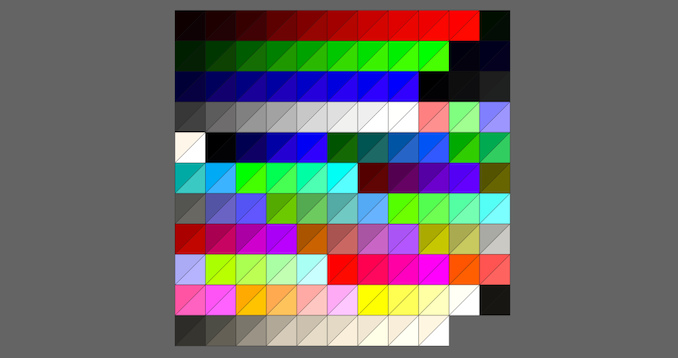
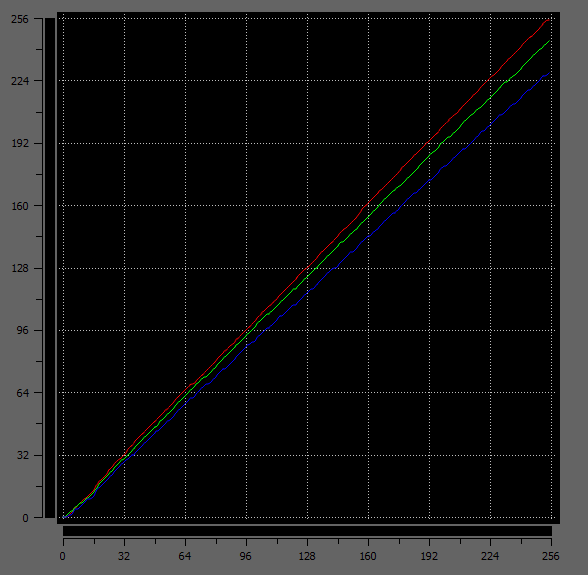
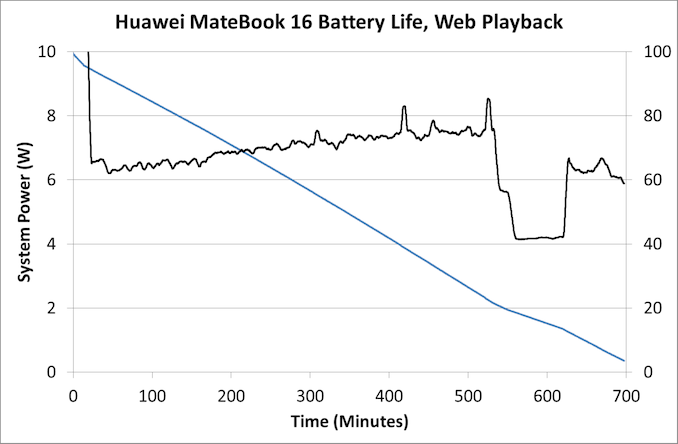

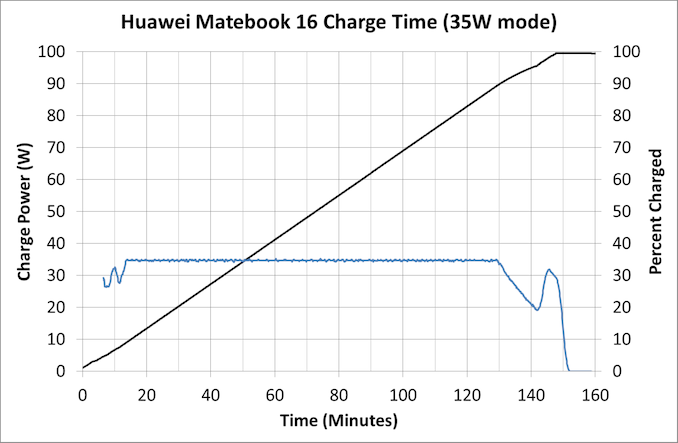








87 Comments
View All Comments
anandcx - Wednesday, October 20, 2021 - link
Gram 17 has 80wh battery, you have linked a two years old model you fool. Since 2020 all Gram 17's have 80wh battery, this is the link for 2021 model: https://www.lg.com/us/laptops/lg-17z90p-k.aas9u1-u...Prestissimo - Wednesday, October 20, 2021 - link
What? Battery is quite small for a 45W CPUbenedict - Wednesday, October 20, 2021 - link
I'm amazed companies keep pushing laptops with 512GB SDDs and pretend they are not crap. 1 TB of storage is the absolute minimum any new pc or laptop should have if you don't want to buy a second SSD in a few months.stephenbrooks - Wednesday, October 20, 2021 - link
I guess people can use them with external drives, but yes, if a laptop or PC has under 1TB of built-in storage it better be priced economically.Tomatotech - Thursday, October 21, 2021 - link
Yup. People don't realise that many SSDs slow down quite a lot as they get full up. My 1TB NVMe SSD is one of these that fold empty TLC space into a SLC buffer. What that means with my particular SSD is that it only runs at max speed up to about 66% full then after that it slows down, as shown in benchmarks and daily feel if it goes over around 650GB full.Practically, I treat it as giving me around 600GB of long-term working storage plus another 350GB of emergency / temporary storage. I knew this before buying it and I'm happy with it, though I would like my next SSD to be 2TB as I'm hovering round the 550GB long term storage mark at the moment.
TheinsanegamerN - Wednesday, October 20, 2021 - link
Not everyone compiles videos from 8k120hz video all day. 512GB is not a hindrance to most. And you can just upgrade it yourself instead of paying a premium to get it pre installed.Prestissimo - Thursday, October 21, 2021 - link
My laptop running W11 has a 128GB SATA 3 SSD and it's blazing fast for everyday tasks. All my data's on my internal storage as well, synced up to Google Drive. We don't need higher capacity PCIe 4.0 SSDs driving up base laptop prices for the general public.Stop speaking for everyone else, it's arrogant and presumptuous.
schujj07 - Thursday, October 21, 2021 - link
If all you aren't storing boat loads of videos, photos, music, or games then 512GB is plenty for OS/Application drive. My work laptop has a 256GB SSD and that isn't an issue as a lot isn't stored on the laptop.fishingbait15 - Friday, October 22, 2021 - link
The people who would buy a device like this are probably 50/50 web cloud and 50/50 local stuff. It doesn't have a dGPU so no AAA gaming and no content creation. People who are doing full stack programming or virtualization would likely opt for CPU with more cores. The days when people had massive libraries of purchased iTunes videos and TV shows are over ... that stuff is streamed now.DominionSeraph - Friday, October 22, 2021 - link
My C:\ drive is using 286GB, 200GB of which is games. Very few people use laptops for much more than internet/office tasks which doesn't even take 50GB if you nuke the hiberfil file. 512GB is overkill for most users.